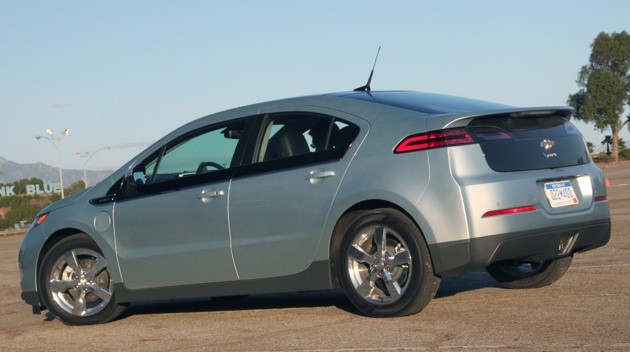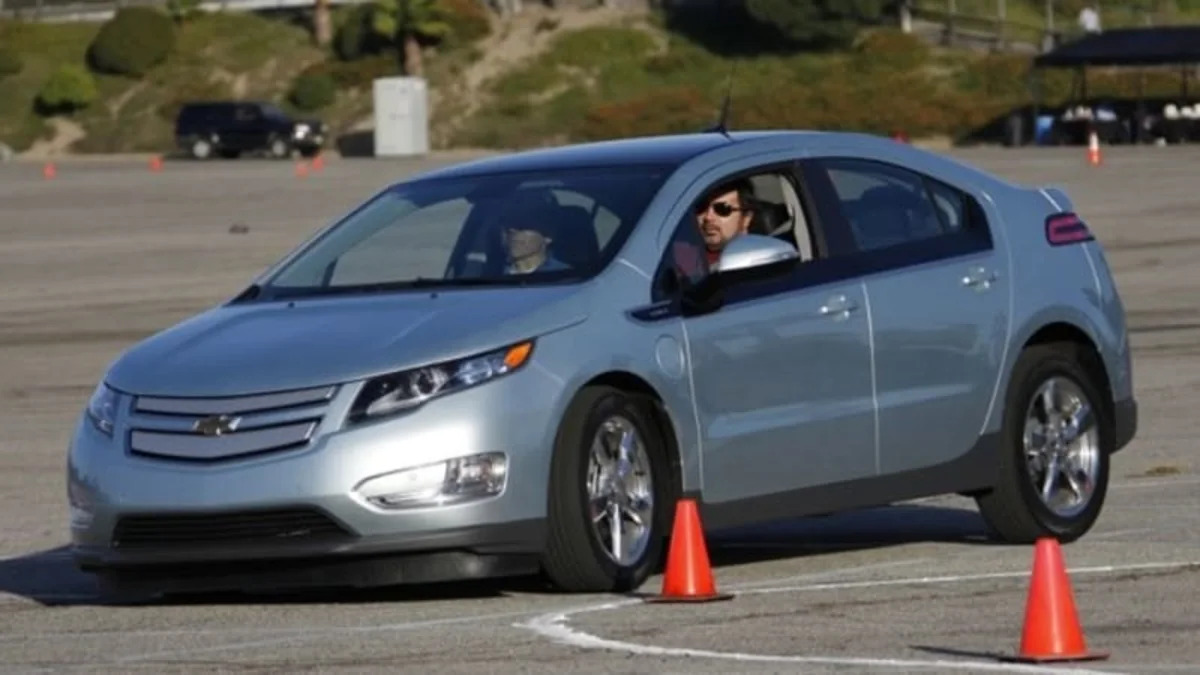2011 Chevrolet Volt – Click above for high-res image gallery
In the ongoing saga of what is perhaps the most public vehicle development program of all time, General Motors held another Chevrolet Volt update call today, a chat with Larry Nitz, executive director-hybrid and electrical powertrain engineering. Nitz and a group of engineers just completed a week-long development drive that wound from San Francisco through Tahoe, Las Vegas, Death Valley and on to Southern California.
As always, Nitz and spokesman Brian Corbett emphasized the Volt is an electric car that is fully capable of road trips without being limited by developing infrastructure. According to Nitz, electric range is a factor of the "3 Ts": technique, terrain and temperature. This latest ride evaluated at all of those. When we drove the Volt back in December, it was at what is known internally at GM as a 65 percent calibration. Having now completed winter testing, the cars are now at 99 percent calibration. Since the overall calibration level is so close to complete, this drive also focused heavily on diagnostic testing. Read on to learn more about this drive and the Volt's "mountain mode."
Photos Copyright ©2009 Sam Abuelsamid / Weblogs, Inc.
We've previously discussed development of vehicle diagnostic systems on modern cars in the context of the problems at Toyota. Whenever automakers develop new cars now they have to spend a significant amount of time testing the diagnostic systems – particularly critical with electrified vehicles like the Volt. These vehicles use a lot of sensors and electronics to manage all aspects of operation. Detecting a fault condition is critical to both optimum performance and safety. Conversely, it's critical to avoid false positive detection of faults since that could strand a driver and cost the automaker money in unnecessary warranty costs.

The test drive in the Southwest includes ten Volts that are running with a variety of settings so that different combinations can be tested simultaneously. The engineering team is working toward finalizing all of the diagnostics and documentation in order to submit it to the Environmental Protection Agency and California Air Resources Board for certification by mid-June.
During our drive in December the transition when starting the engine for charge sustaining mode was almost seamless. At that time, the main concern was the noise of the engine during heavy load conditions such as hard acceleration. Actually calling it a problem is a bit of an overstatement. It wasn't especially loud compared to most other compact cars but given that the Volt is expected to have a "character that is predominantly electric," Nitz and chief engineer Andrew Farah wanted it quieter. To that end, additional calibration and acoustical treatments (sound deadening material) have apparently alleviated the NVH. We'll have to judge that for ourselves when we check out an updated car.
Another concern many have expressed about the Volt is its performance while driving in mountainous terrain. Since the range extender only has an output of 55 kilowatts compared to the 111 kW of traction motor and battery, there is the possibility of severely reduced performance once the battery reaches the "depletion" point. The Volt's battery is designed to operate between about 30 and 80 percent charge in order to maximize its lifespan. When more performance than the 55 kW is required, the battery can be drawn down below that 30 percent threshold and then it is recharged during light load driving.
During the drive, Nitz and the team drove up from Los Angeles to Big Bear in part to evaluate the new mountain mode. Mountain mode can be selected by the driver prior to climbing up into the mountains in order to leave a larger reserve of performance. When mountain mode is selected, the "depletion point" moves up from the 30 percent level to perhaps 40-45 percent. Nitz declined to say precisely how much extra reserve mountain mode would provide. This, of course, reduces the available electric-only distance before the range extender starts up. However, when driving in arduous conditions it will help ensure that the Volt's full performance capability is preserved.
Two other driver selectable modes are in the climate control system. Nitz explained that in very cold or hot weather, it actually takes more energy to manage to the vehicle's temperature than it does to propel it at constant highway speeds. The heating and air conditioning can be adjusted with the Eco and Comfort modes. In Eco, the system will let the temperature vary more from the set point while comfort will keep it closer to the driver's request. According to Nitz, even sitting in LA gridlock with ambient temperatures up to 88 degrees, the Eco mode was still able to keep the interior of the car comfortable.
It sounds like the Volt is just about ready and we're looking forward to our next opportunity to try out a closer-to-production example, hopefully sometime this summer.


Sign in to post
Please sign in to leave a comment.
Continue